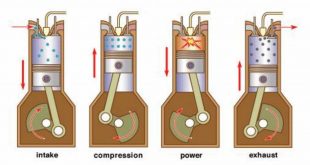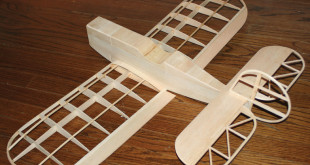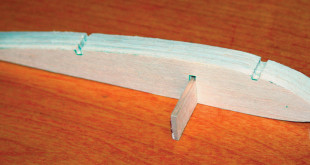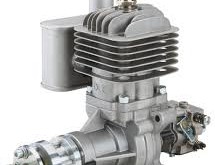With seemingly hordes of electric powered model aircraft filling the skies there are many who feel an airplane is only truly an airplane if it is powered by an internal combustion (IC) engine. Indeed the sound of a well-tuned four stroke echoing through the skies on a clear fall day has an allure all its own.
Read More »How To's
Smart Radio Programming
This is a back to basics walk through radio setup for primary flight controls. The P-51 has ten servos installed in total. The receiver that comes with the DX18 is a nine channel receiver which was installed in the plane. With that being said one “Y” harness will be required for the radio installation because of the lack of receiver channels.
Read More »Low Hassle Fiber-Glassing With Eze-Kote
For decades experienced RC model air-plane builders, especially scale builders, have relied on fiberglass as a tough, easy-to-apply balsa covering material that resists dings and scratches and will accept most paints.
Read More »Crossover Tips & Tricks
At the risk of sounding too cliché, getting older really does make you wiser. Honestly, it’s a matter of experience. Over the years I have made so many mistakes and wasted so much time and money that I was finally forced to find solutions to my modeling concerns. Now, while much of what follows is what I personally discovered
Read More »Scaling Out The Atomik RC/Sonic Modell B-17 Pt. 1
Recently I devoted several weeks of workshop time to determine just how far I could go with fiberglass-and- paint resurfacing and refinishing of a typical large foam/ARF electric powered RC scale warbird…in this case the 61” wingspan J-Power P-51-D available from Atomik RC.
Read More »Cut A Perfect Cowl
Everyone knows that the “A” in ARF stands for “Almost”. For some kits, that can be a pretty big “A”! While the majority of ARF’s have most of the major components built, there are significant variations in the amount of time and skill required to finish them well. There is also the issue of instruction manuals being, shall we say, “loosely” translated Chinese building instructions.
Read More »Thermals 101
The one constant question that is asked about sailplane flying is how do you know when you have found a thermal or lift? I’m going to explain that process for you, but first, what is a thermal?
Read More »Conceal Control Horns And Pushrods
In the world of RC scale model airplane building, one of the trickiest problems is how to “hide” external pushrods and control horns inside wing surfaces. With tail control surfaces these devices can normally be concealed within the fuselage. But on wings, which are often very thin, the problem is far more difficult.
Read More »Building for Beginners Part III
By Scott Copeland Time for the two-dimensional world to add a third dimension! In the first two parts of this column (Fly RC April and May 2013) we’ve studied our plans, gathered our tools and carefully cut out …
Read More »Building for Beginners – Part 2
Words by Scott Copeland Now we are cooking with gas! In our last installment, we discussed how to choose a building project and pointed out how to read the details of the plan. We have done some studying …
Read More »Complete Teardown and Rebuild of a DLE 30
Perhaps the most ubiquitous gas-powered engine in the RC market, the DLE 30 has been around for a good while and remains a standard in the ¼-scale arena. Well known for reliable and consistent operation with a hefty dose of power to spare, the DLE 30 has found a home in all types of airframes from trainers to sport models and even multi-engine warbirds and civilian air buses. If treated properly, this engine can serve you well for hour upon hour of operation, but even the most conservative pilot will eventually need to crack that case open for a little maintenance or repair work.
Read More » Fly RC Magazine WE LIVE RC
Fly RC Magazine WE LIVE RC




